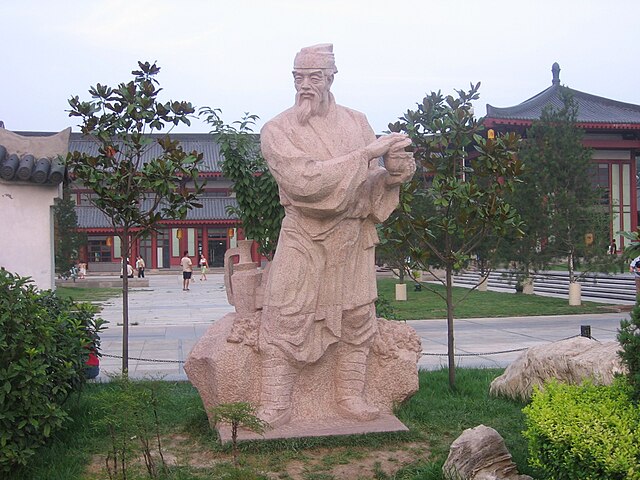Lu Yu or Lu Ji (陆疾), courtesy name Jici (季疵) was a Chinese tea master and writer. He is respected as the Sage of Tea for his contribution to Chinese tea culture. He is best known for his monumental book The Classic of Tea, also known as Ch'a Ching, the first definitive work on cultivating, making and drinking tea.
A statue of Lu Yu in Xi'an
Statue of Lu Yu, at the Dragon Well Tea Plantation, Meijiawu, Hangzhou
Chinese tea culture includes all facets of tea, both physical and spiritual, that have significantly influenced Chinese culture throughout history. Physically, it consists of the history of tea cultivation, brewing, serving techniques, methods of consumption, arts, and the tea ceremony. Tea culture is to take tea as a carrier, and through this carrier to spread various arts. Tea culture is an integral part of traditional Chinese culture. Tea culture is the organic fusion of tea and culture, which contains and embodies the manifestation of a certain period of material and spiritual civilization. Tea culture is the combination of tea art and spirit, and the expression of tea art through Spirituality. It emerged in China in the Tang dynasty, flourished in the Song and Ming dynasties, and declined in the Qing dynasty.
Chinese tea sets
A tea house in Shanghai, China
A tea house in Presidential Palace Garden in Nanjing, China
Song dynasty tea preparation, painted by Liu Songnian.






